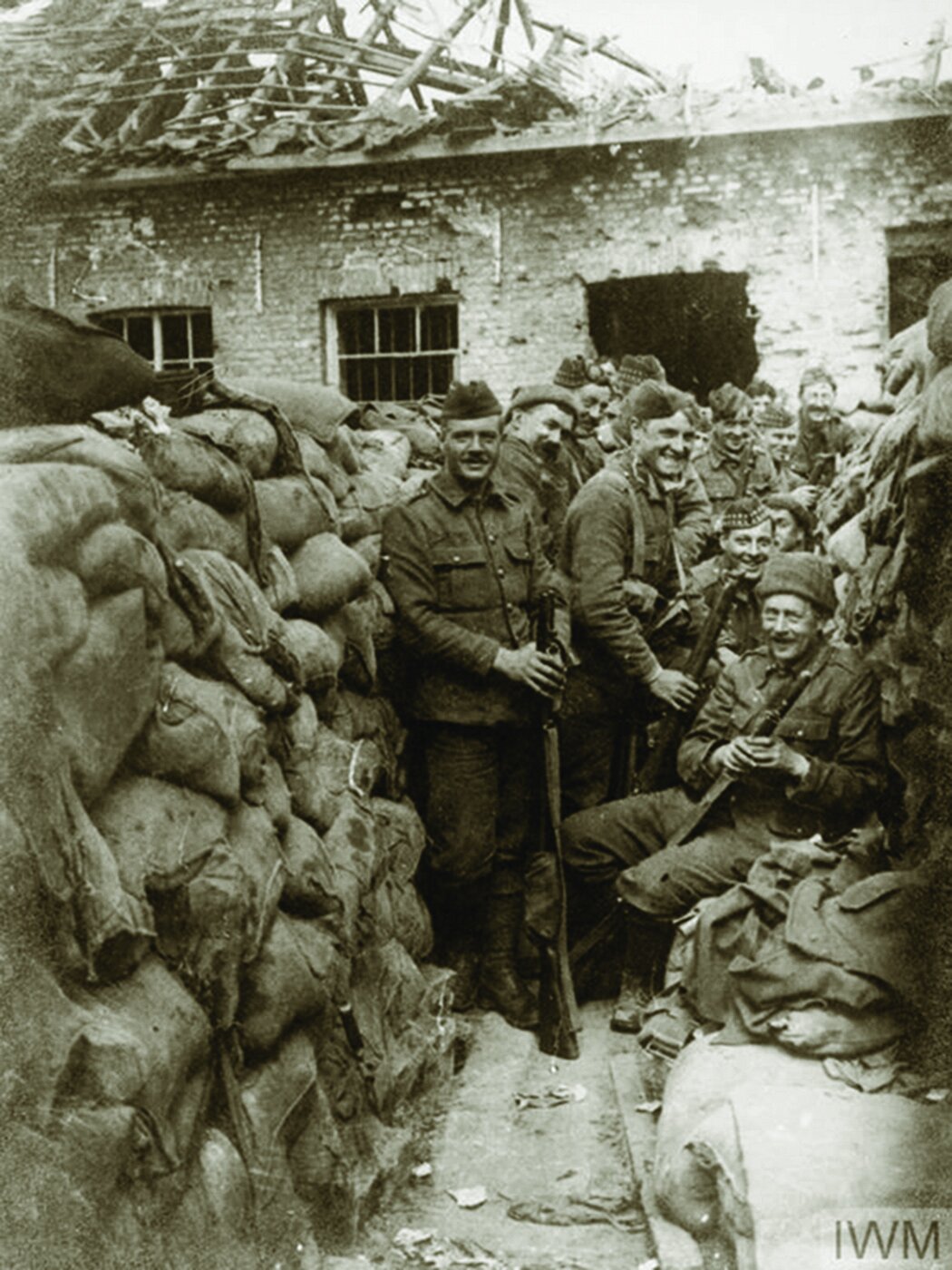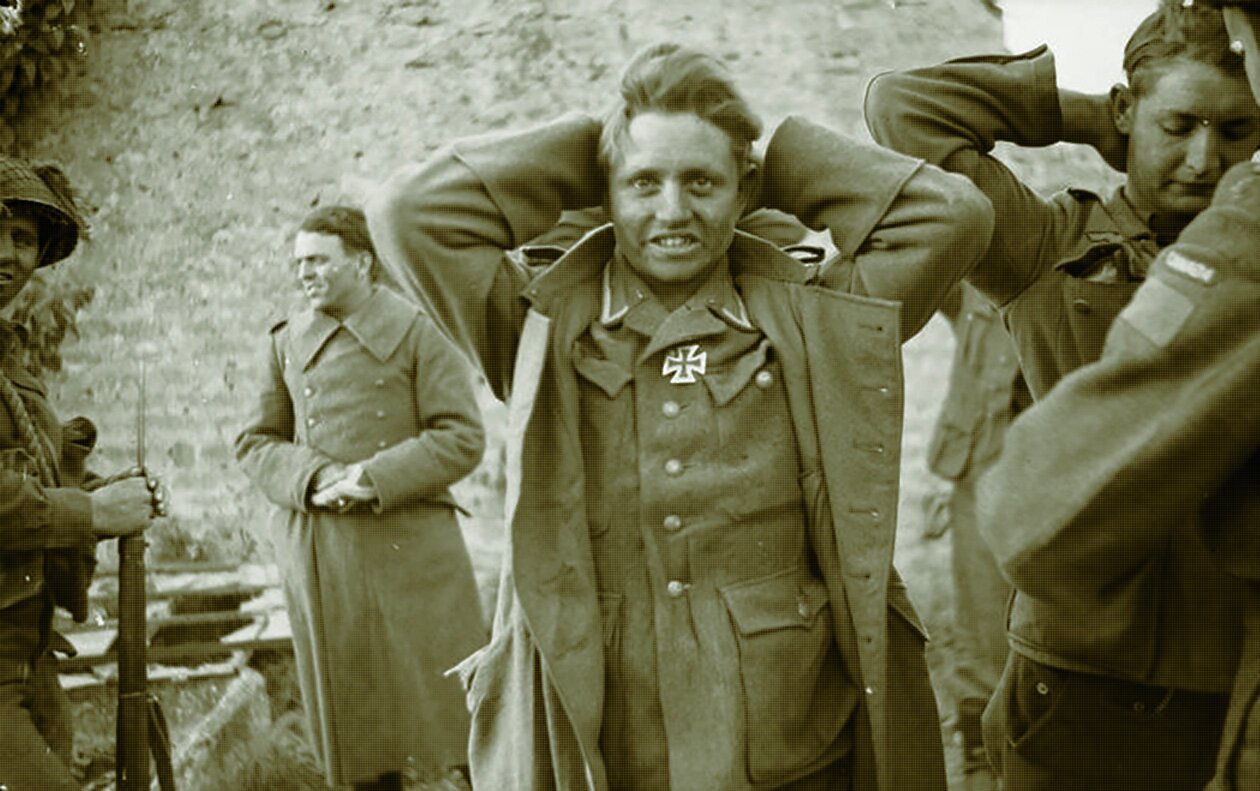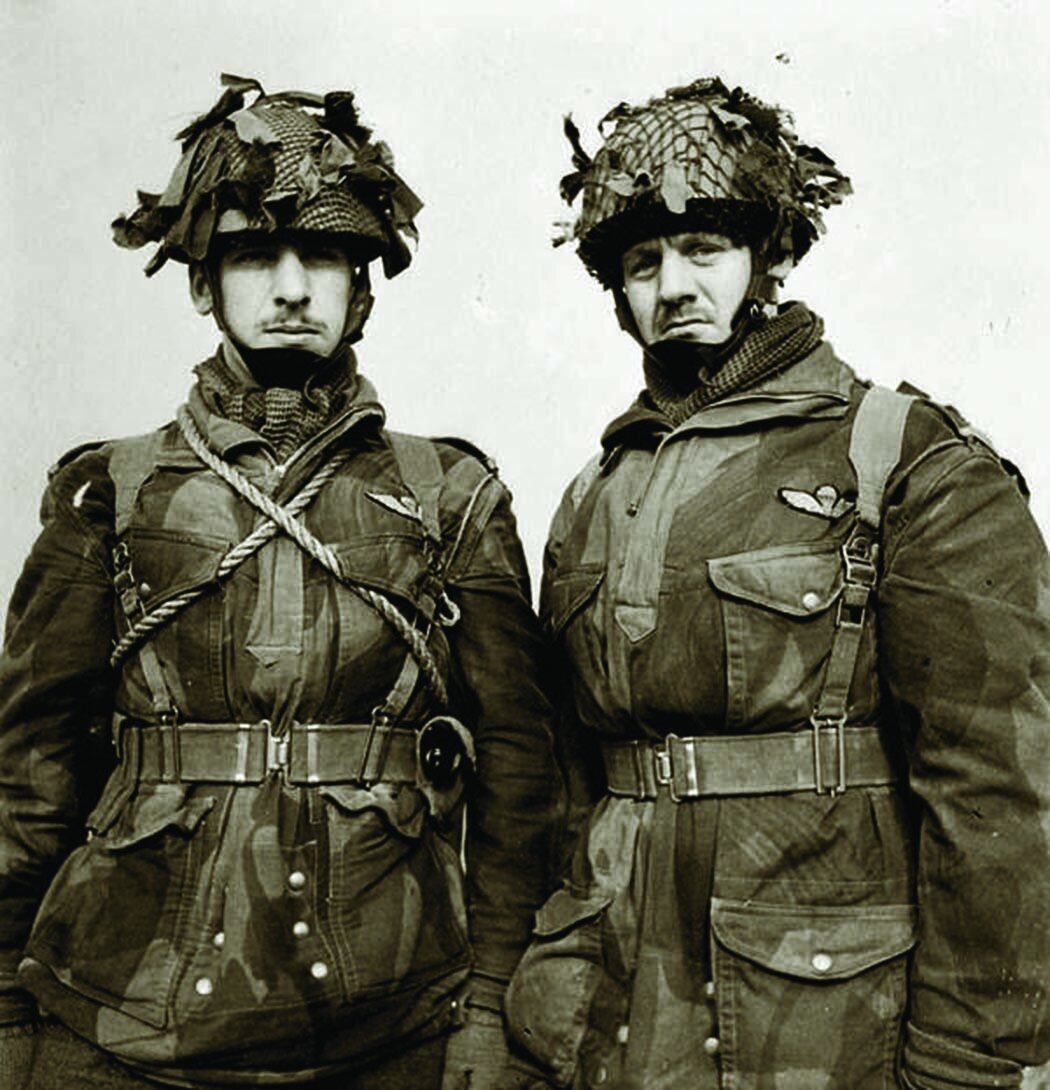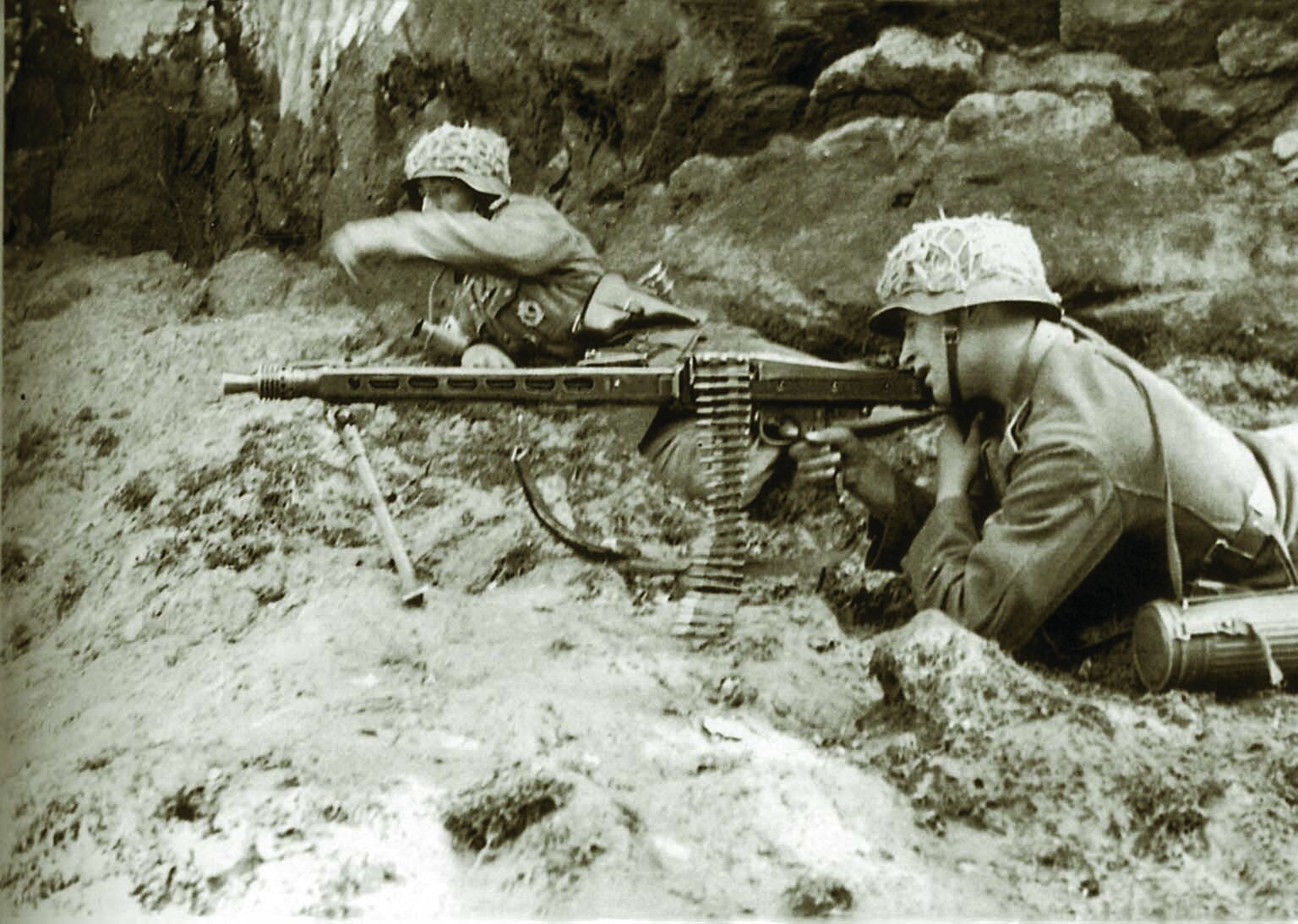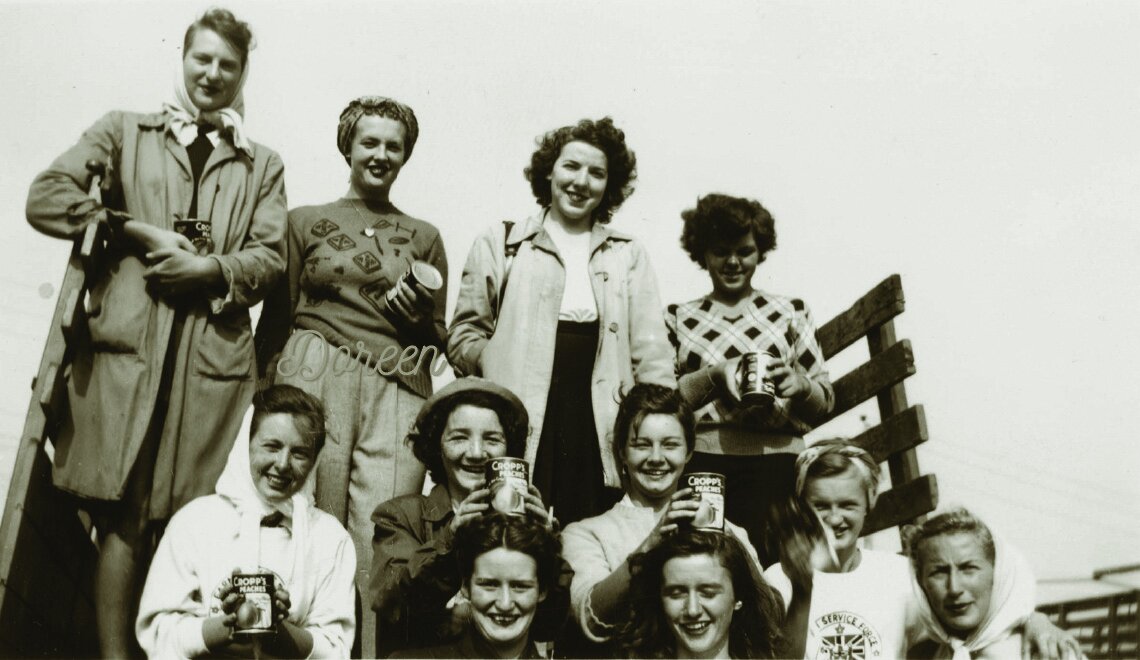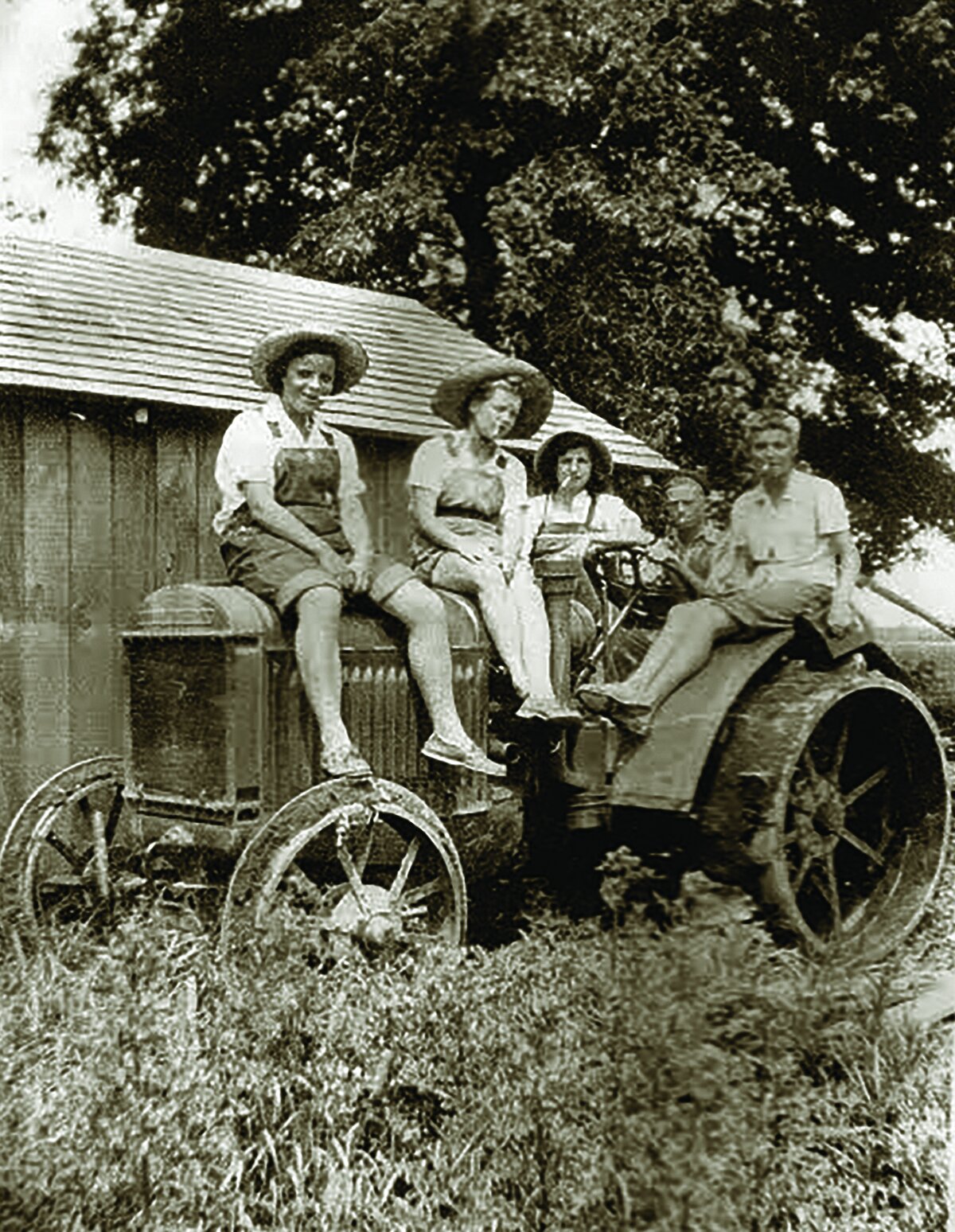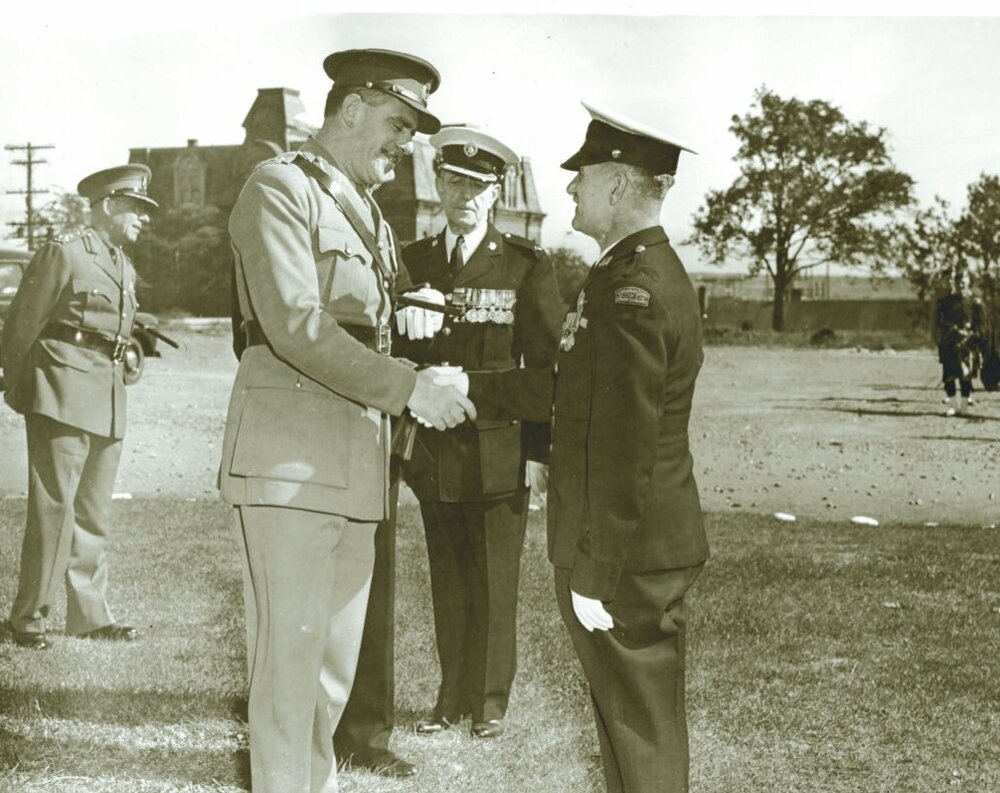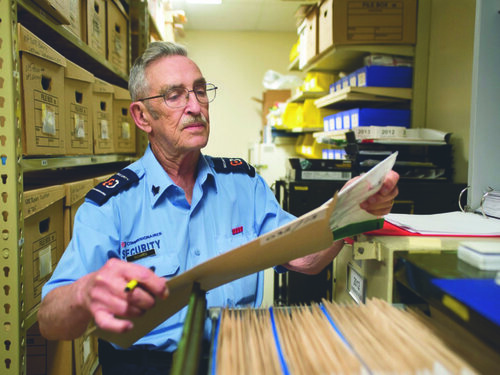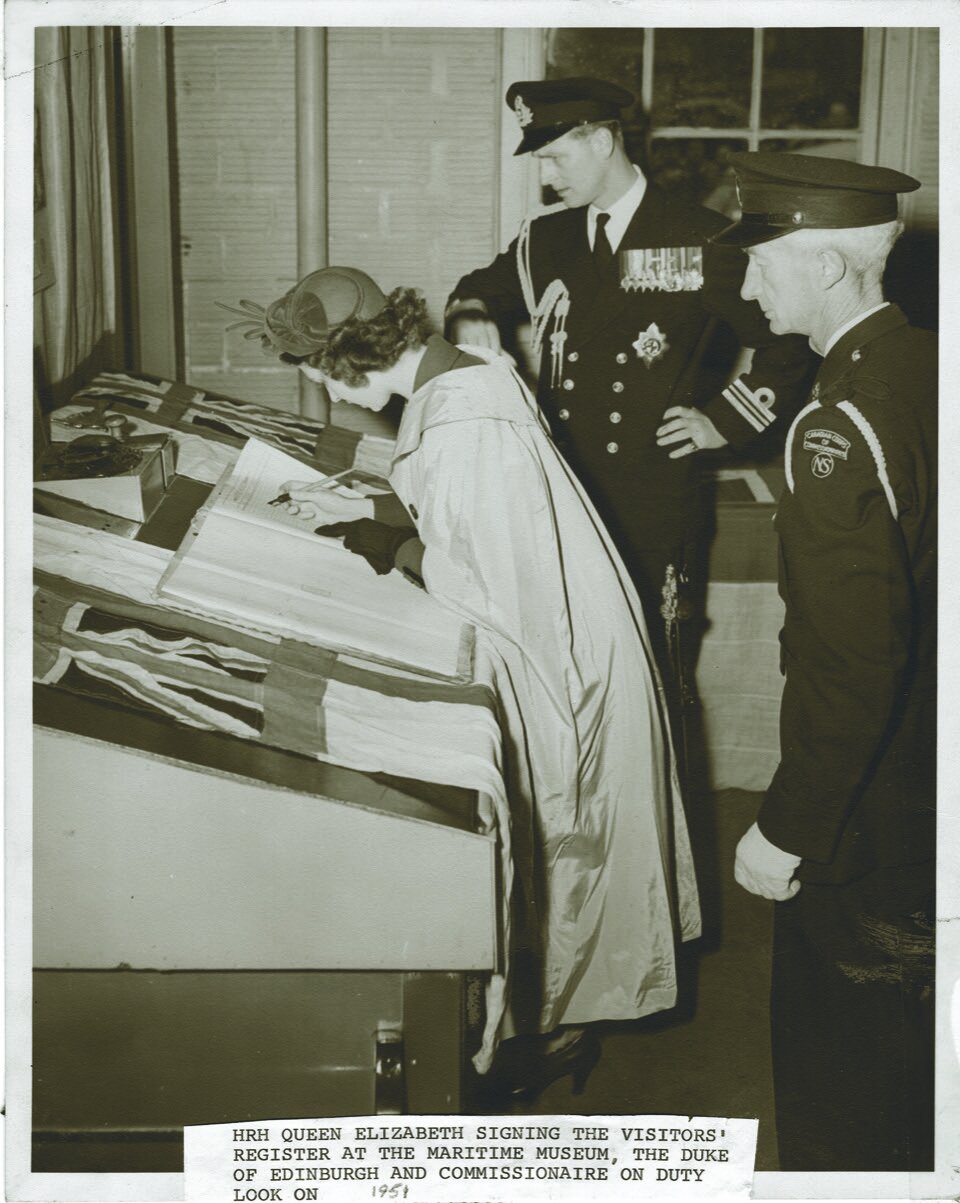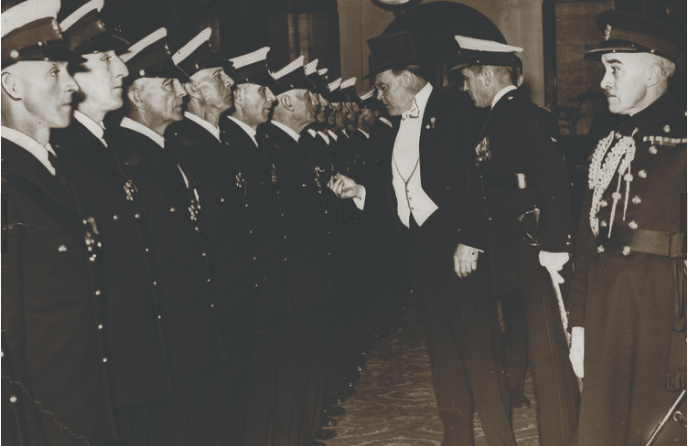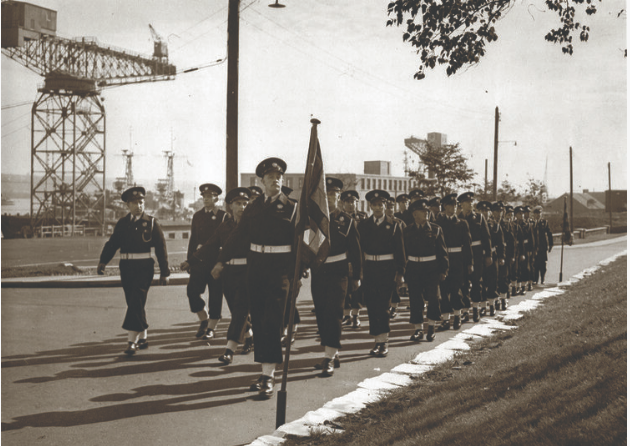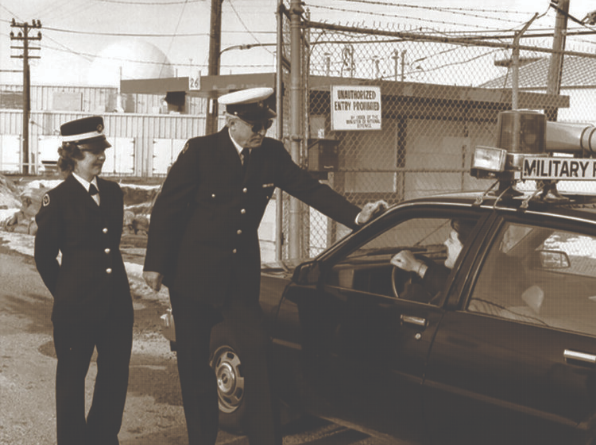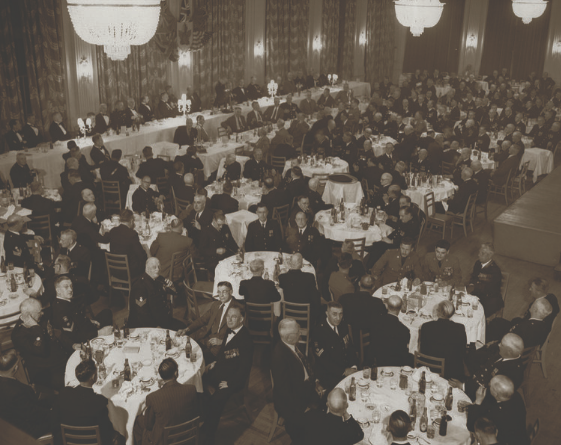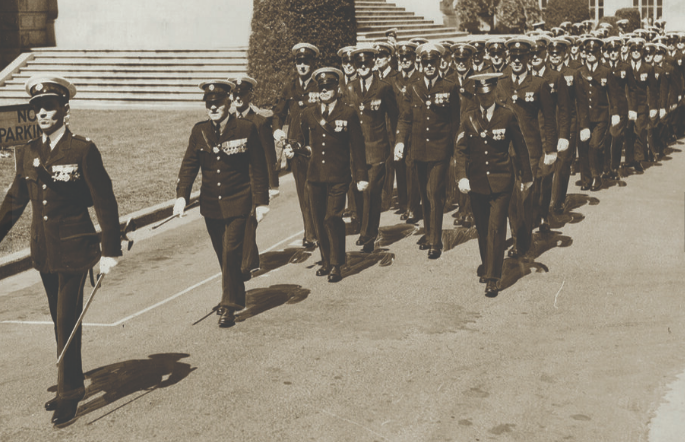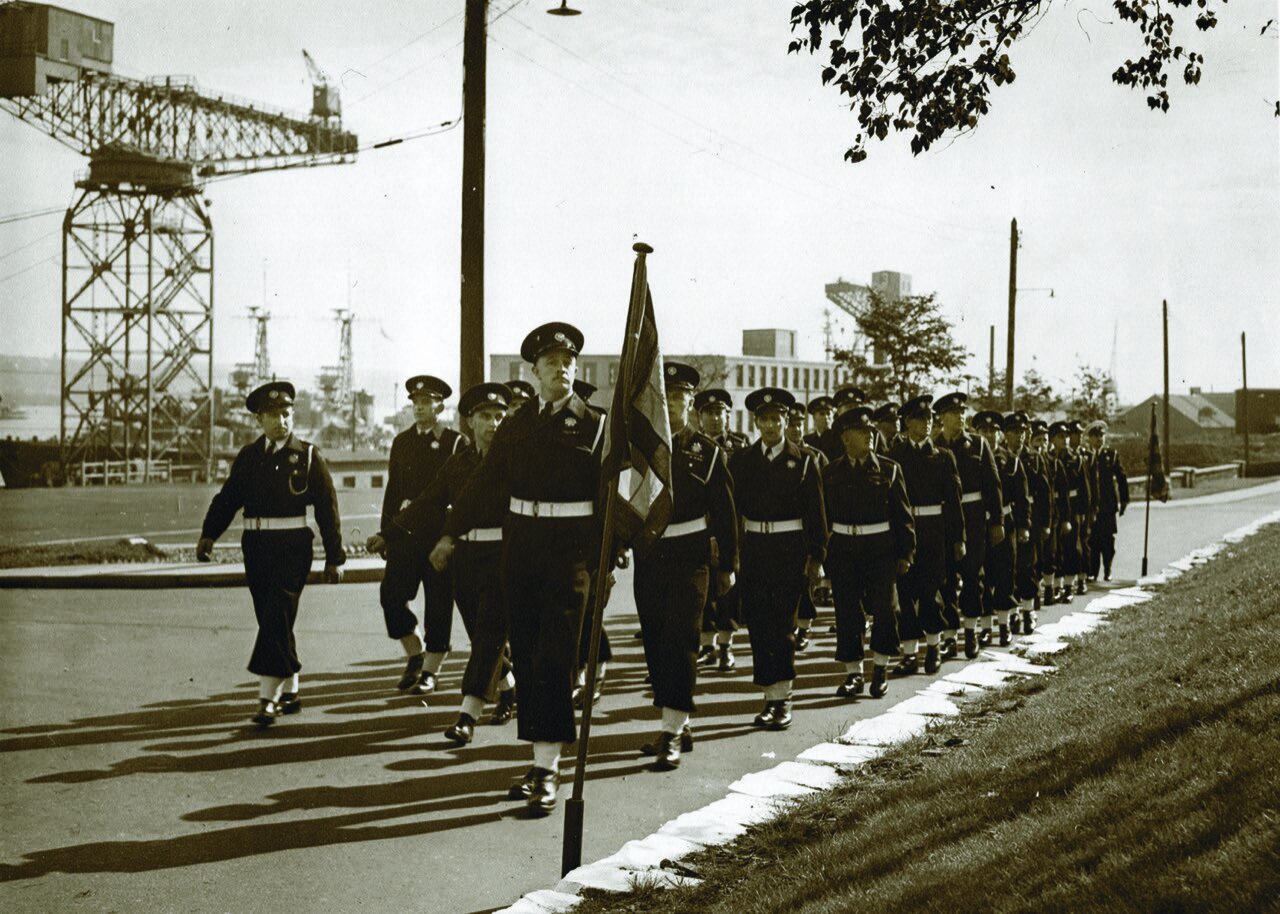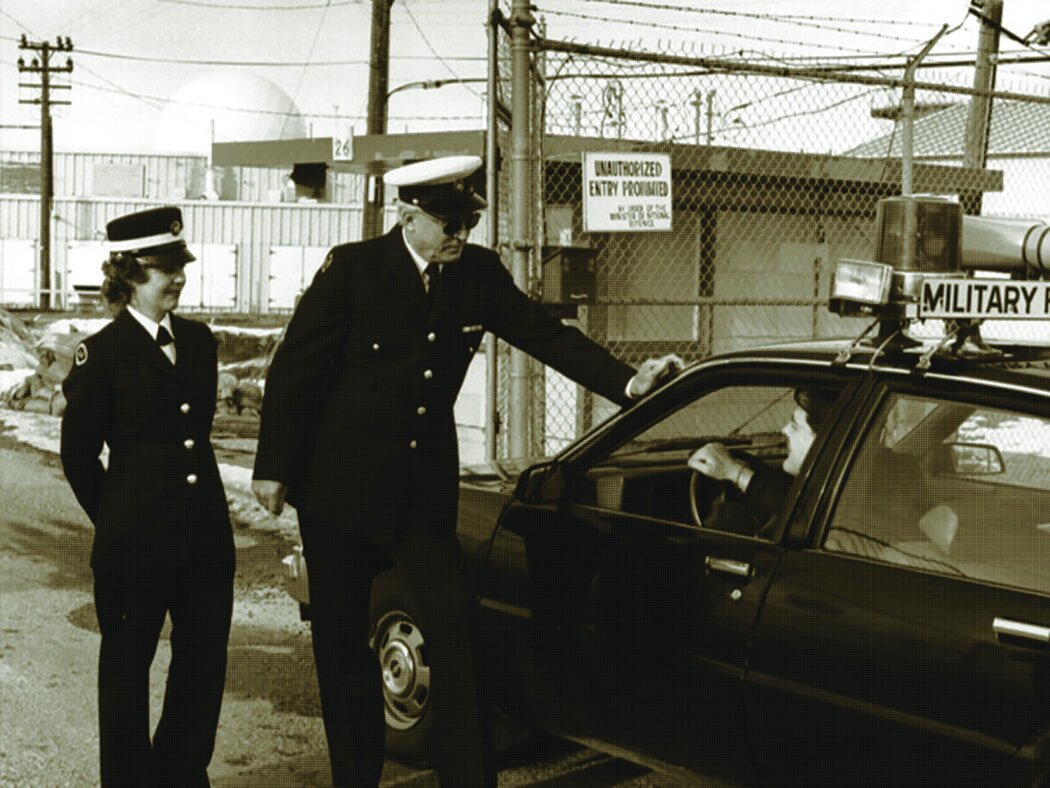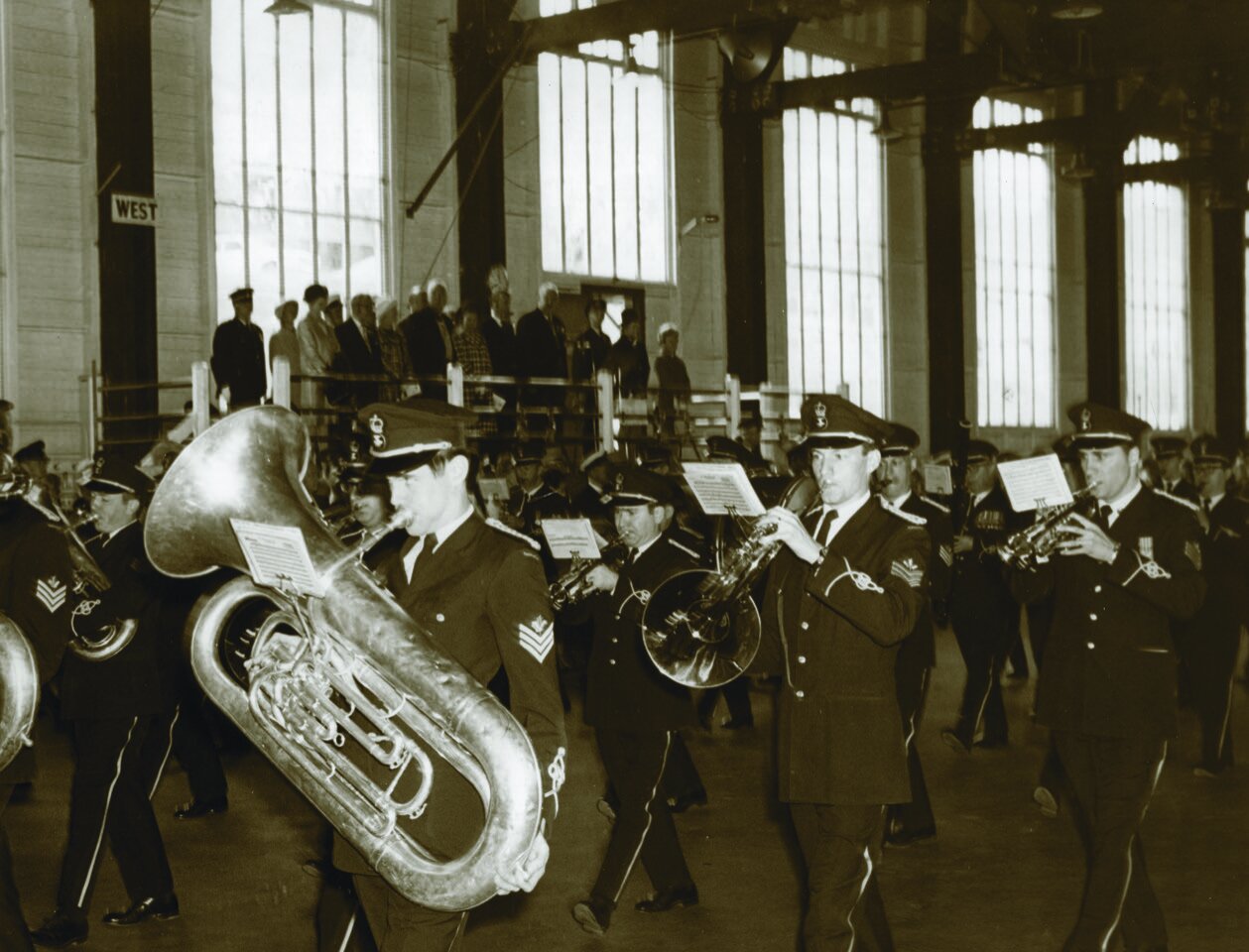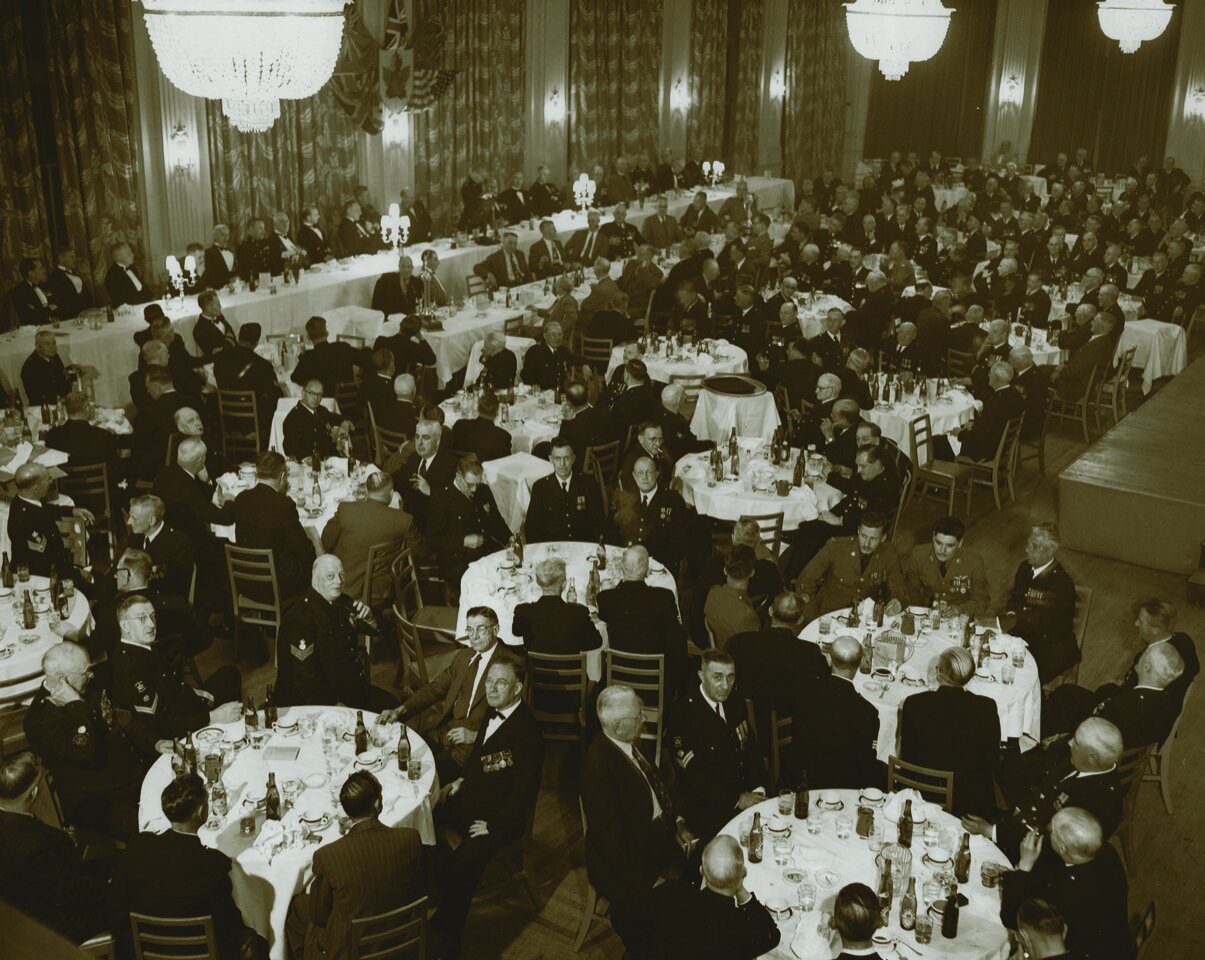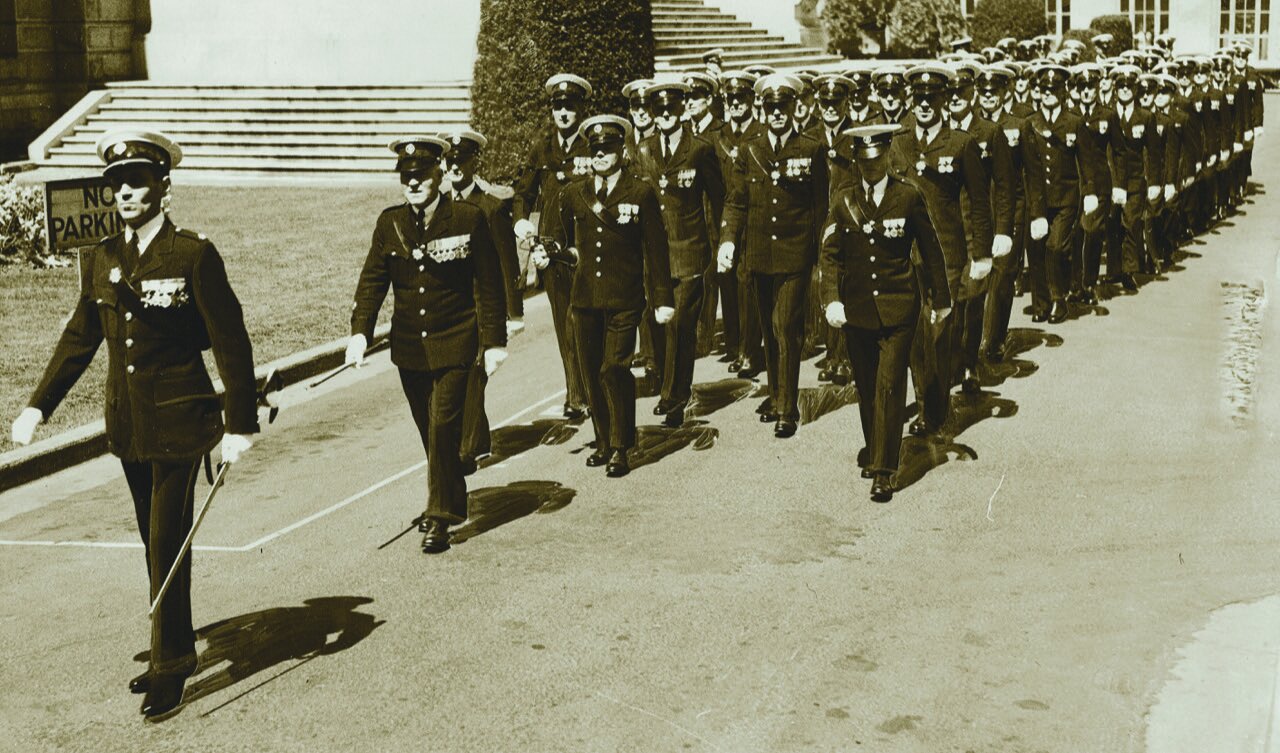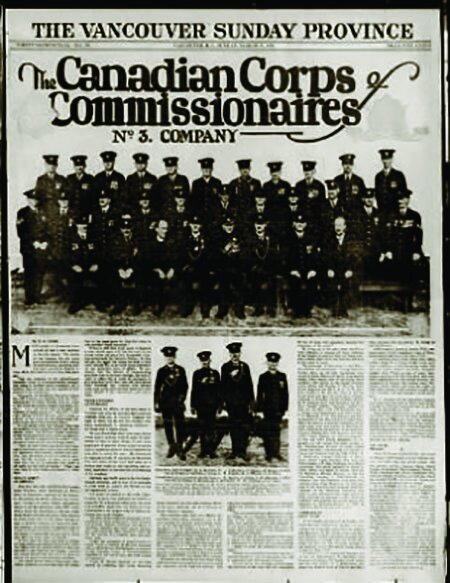(Volume 26 Issue 5)
By Mark Zuehlke
On June 6th 1944, the greatest air and naval armada in history struck the Normandy coast of France. Breaching Hitler’s Atlantic Wall was a tremendous feat, but in the days and weeks ahead, citizen soldiers of the world’s democracies had to hone their craft against some of the toughest and most experienced troops of the German Wermacht. This excerpt is from the ninth volume of Mark Zuehlke’s s Canadian Battle Series and tells the story of the Canadian attack on the Carpiquet airport. Although Canadian soldiers achieved the greatest penetration of the first days of June, progress afterward was measured in blood
against dug-in, fanatical resistance.
To indicate the location of a wounded man, the nearest soldier would drive the man’s rifle bayonet into the ground so the butt was visible above the wheat. The rifle markers also helped prevent tanks and Bren carriers from running over the fallen. On the extreme left flank, the North Shore’s carrier platoon rumbled along in their Bren carriers next to the railroad. Their commander, Captain J.A. Currie, thought the “dust and smoke made it like a night attack…and during the clear spots, we could see men going forward, but had no idea so many had been hit. Padre [R. Miles] Hickey was right among them, giving the last rites and so was Doc [John Aubry] Patterson with his medical kit. No other unit had a pair to match them.”
Hickey had waded into the midst of ‘B’ Company, shredded even as it advanced towards the start line. “Everywhere men lay dead or dying,” Hickey wrote. “I anointed about thirty right there.”
‘A’ Company’s Major Anderson thought the “advance through the grain field was little short of hell.” He kept his bearings in the boiling smoke by taking constant compass readings. Behind him, one platoon wandered off at a right angle to the line of advance. Lieutenant Darrel Barker had been mortally wounded, and, unable to see the rest of the company, the platoon drifted out of sight into the smoke before Anderson could bring it back on course.
Many of the fifty 12th SS soldiers deployed in the field west of Carpiquet had been killed or so badly dazed by the shelling they meekly surrendered when overrun. But a few remained defiant.
Their fire added to the casualty toll. “I am sure at some time during the attack,” Anderson recalled, “every man felt he could not go on. Men were being killed or wounded on all sides and the advance seemed pointless, as well as hopeless. I never realized until the attack on Carpiquet how far discipline, pride of unit, and above all, pride in oneself and family can carry a man, even when each step forward meant possible death.”
‘B’ Company’s Lieutenant Charles Richardson had only twenty of the thirty-five men in his platoon left. Lieutenant Paul McCann’s platoon was on his right. Both men were using compasses. When the smoke lifted momentarily, Richardson saw that McCann’s men were now to his left. He had no idea how that had happened. His men emerged from the smoke in an extended line and suddenly faced a field that had been burned to stubble by artillery fire. Charging forward, they wiped out a slit trench defended by five Germans. Richardson saw a pinwheeling stick grenade land in front of him. “I felt a hot stinging in my right side and left hand, then thought it didn’t matter too much.” Suddenly alone, Richardson took on the German position single-handedly and killed its defenders. His batman and two runners had all been seriously wounded by the grenade.
“My side started to bother me badly and my left hand was peppered with shrapnel. I had a long cigarette case in the inside pocket of my battledress and a towel wrapped around my waist. In order to look at my side, which was throbbing, I unbuttoned my tunic and the towel was full of shrapnel. I reached for a cigarette and found the case bent almost double by a large piece of shrapnel. I felt I was not hit too badly but out of nowhere appeared our beloved colonel and I quickly had orders to get back to the first aid post—which marked the finish of my first month in action.”
Two Fort Garry Horse squadrons were riding right on the heels of the North Shores and Chauds. One Sherman rolled up and spun in a full turn that buried Sturmmann Karl-Heinz Wambach to the chest in the sandy soil of his slit trench. He was trying to free himself when a voice yelled, “SS bastard, hands up!” Two North Shores dragged him free and tied his hands. One then punched him in the face. He was taken to the rear, urged along by rifle butt blows, and tied to a fence post for some hours in an area subjected to frequent shelling by German 88-millimetre guns.
Wambach’s complaints about his treatment led the North Shore’s historian to comment that “given the way Canadians felt about the 12th SS, he got off lucky.” During its advance across the field, the North Shores took thirty-five prisoners and killed an equal number.
At 0625 hours, almost ninety minutes after the attack began, the North Shores reached the shelter of a stone wall in front of Carpiquet and reported being on their first objective. The Chauds signalled brigade a few minutes later that they had men on the village edge and among the nearby hangars. Carpiquet was still being heavily shelled, forcing a twenty-minute pause. More casualties resulted when shells burst in the tree canopy next to the Canadian positions. When the artillery ceased firing, both battalions plunged into the village. Most of the small garrison actually deployed within either surrendered, were already dead, or quickly fled. The North Shores sent back twenty more prisoners. In the Chaudière sector, a handful of hard-core 12th SS in the hangar complex were burned out of concrete pillboxes by Crocodiles. At 1056, the Chauds reported their grip on the hangars secure.
Surprisingly, there were French civilians still living in the badly damaged village. Some, who emerged from bomb shelters and basements, had been wounded, and most seemed to be “in a state of severe shock,” Lieutenant MacRae wrote. “One old couple passed me going to the rear with their few possessions in a wheelbarrow. They looked too dazed to know what was going on.” While most of the civilians immediately fled towards the Canadian lines, a few were driven back into hiding when the Germans slammed Carpiquet with heavy and continuous mortar and artillery fire.
Private Feldman manned his wireless in a concrete bunker the Chauds were using as a battalion headquarters. Lieutenant Colonel Paul Mathieu, Major Lapointe, the battalion padre, and Feldman felt pretty secure there until “we heard this big noise and knew it was coming close. I was facing one way and the shell…hit the HQ in another place. I was in the ‘dead zone’ or I’d have been killed by the concussion…I was knocked flat into the bunker and the officers looked at me and thought I’d died…I had landed on my set and that really prevented me from getting hurt, but the set was damaged. We got it going again and it was a miracle.”
To the south, as Fulton’s ‘D’ Company had closed on the first of the three hangars, it began taking heavy small-arms fire in addition to being shelled and mortared. All three platoons were shredded. Fulton was the only officer still standing. “We made a final rush and got into the hangar, taking over the extensive network of deep weapon pits and trenches developed by the Germans to guard the hangars. It was then that the heaviest bombardment I experienced throughout the whole war was brought down upon us. If it hadn’t been for the excellent German trench system, I believe none of us would of survived.”
Fulton radioed Lieutenant Colonel John Meldram. His company held the hangar but was too weak to go any farther, Fulton reported. However, he believed it could repel the likely counterattack. ‘A’ Company had been forced to ground a hundred yards short of the hangars. Meldram decided to feed ‘B’ Company through to the hangar held by Fulton. He also requested that 8th Brigade release some of ‘B’ Squadron’s tanks to accompany it.
Blackader reluctantly agreed to release one troop along with four Crocodiles. ‘B’ Squadron was Blackader’s only armoured reserve, and he intended to have it support the follow-on assault by the Queen’s Own Rifles to clear the control and administration buildings in the northeast corner of the airfield. Because the Winnipegs had failed to clear the hangars and remove the German threat to the Queen’s Own from that flank, Blackader had delayed this phase. He also ordered the Queen’s Own to form up inside Carpiquet for the launch of their attack.
‘B’ Company met the same murderous hail of German shells the two leading companies had endured. Only about half the men reached the hanger Fulton held. Captain Jack Hale had been wounded. Fulton combined the survivors with his own. But the Winnipegs were still unable to clear the Germans out of the concrete pillboxes and trench systems defending the other hangars. The Crocodiles, the Winnipeg war diarist wrote, “proved useless.” As for the Fort Garry troop, its four Shermans met deadly fire from hidden anti-tank guns. Lieutenant Arthur Edwin Rogers and Sergeant Alastair James Innes-Ker were both mortally wounded when their tanks burst into flames. The demise of those two tanks prompted the remaining two to flee.
Wireless contact between battalion headquarters and the forward companies was so erratic that Meldram ordered Fulton to come back for a briefing. “I had no desire to make my way back across the airfield again, a target for the German guns; mine not to reason why, however.” As Fulton ran back, he spotted Rifleman Leonard Miller calmly lying in a slit trench and reading a pocket-sized New Testament. Meldram ordered the lead companies pulled back to a small, sparse wood a few hundred yards ahead of the original start line. Artillery would then plaster the hangars, and a new attack would go in with ‘B’ Squadron alongside. As Fulton passed Miller’s slit trench on his return run, he saw the man had been killed by a mortar round.
At 1600 hours, the new attack went in behind another bombardment. Rifleman Edward Patey, a Bren gunner in ‘C’ Company, had just started forward when mortar and machine-gun fire tore into his platoon. Three men went down. He recognized one as a man in his mid-thirties everyone had nicknamed “Pops.” The man lay “writhing on the ground, his whole stomach ripped with bullets.” Patey “was hit by a mortar piece in the eye and upper chest and…left deaf for a couple of days.”
‘B’ Company’s Sergeant Major Charles Belton suffered a chest wound. “I can remember when we were kids, we watched an Indian-cowboy movie and someone got shot and hit the ground and was dead. When I looked down and saw this blood spurting out of my chest, I thought I’d better lie down, so I did. I was fortunate. The shrapnel came through a book I had in my upper right breast pocket. Otherwise I would probably have had that shot go right through me. But the book stopped the shrapnel, although it took two pieces of cardboard and that book into the wound and that infected it and made it worse.”
As Belton started crawling to the rear, a German sniper in a nearby tree shot him in the leg. One of his men gunned the sniper down. Belton was evacuated to a field hospital. “There were so many of us in that tent that stretchers were only about [six] inches apart, just enough room for the nurses to walk in between…just row, and row, and row of us on these stretchers. I lay so long on this stretcher that my back pain was far worse than the wounds. I finally got back to England on a barge.”
While the infantry had gone straight for the hangars, the Shermans had executed a “sweeping attack” to get around the left flank of the Germans inside. Within minutes the tankers found their planned charge slowed to a crawl by thick bands of barbed wire and other obstacles, as well as anti-tank fire coming from in and around the hangars. Major Christian also reported the squadron was taking heavy fire from Panthers on the high ground behind the village of Verson to his right. The British were to have taken this ground but were stalled inside Verson.
‘B’ Squadron was completely out of contact with the infantry, which, having regained the first hangar, were again stuck there. Christian manoeuvred the squadron towards the hangars but found his tanks caught in a vise between a force of Mark IV and Panther tanks near Verson and other tanks at the hangars. A fierce shootout ensued. Soon burning tanks littered the airfield. ‘B’ Squadron had gone into the attack fifteen strong. When the tank battle broke off, nine remained operational.
The battle clearly stalemated, Meldram told Blackader at 1725 hours that “it would be impossible to hold on without increased [support]. Blackader had nothing more to send. When a mixed force of tanks and infantry approached the airfield from the east, artillery managed to scatter it. But the Germans only “dispersed and rallied” the moment the guns ceased firing. Blackader ordered the Winnipegs back to Marcelet. As the infantry withdrew, the surviving tanks joined them. At Marcelet the Winnipegs dug in. Blackader ordered his battalions to reorganize where they were.
“What had we accomplished?” Fulton wondered. “Possibly the Germans recognized our intention to take Carpiquet and that we would be back. But at what a cost!”
Blackader ordered the Queen’s Own to join his other battalions holding Carpiquet. To reach the village meant running the gauntlet of artillery and mortar fire through the wheat field. En route, ‘B’ Company’s Rifleman Alex Gordon was wounded and left behind. Rifleman J.P. Moore rolled up in his Bren carrier just as the men in Gordon’s platoon realized he was missing. They warned Moore that “the fire was so heavy that anyone in the wheat field would be killed.” Moore gave the carrier full throttle, drove like mad into the wheat field, grabbed up Gordon and threw him in the carrier and brought him to safety.”
As the battalion closed on Carpiquet, one carrier platoon section, operating as foot infantry, sought shelter beside a concrete bunker. Suddenly, a German inside it opened up with a Schmeisser, and Rifleman Art Reid was shot dead. The entire battalion went to ground and called for tanks and Crocodiles to destroy the position.
When the armour arrived, the Crocodiles blasted “with flame the walls about the entrances, which were set in a wide trench on the south side. This treatment merely blackened the [heavy] concrete walls and appeared to have no effect upon the enemy within. Nor were the tanks able to damage the structure,” Major Steve Lett, the battalion’s second-in-command, wrote.
Corporal Tom McKenzie noticed six ventilation shafts poking out of the bunker’s roof and dropped a Mills grenade down one of the pipes. When nothing happened, he realized the pipe was virtually the same diameter as the grenade and this prevented the firing pin from releasing. Flipping the pins free and then dropping the grenades down the pipe worked, but the explosions still failed to convince the Germans inside to surrender.
Because the Germans had killed Reid, McKenzie was getting “madder than hell.” So he stole a carrier’s four-gallon jerry can, emptied the gas down the pipe, and dropped a phosphorous grenade down after. A lot of smoke boiled out of the ventilation duct and there were some satisfying secondary explosions, but still no Germans appeared.
While McKenzie had been taking on the bunker, the battalion’s pioneers had unsuccessfully tried to blow the roof open with a 25-pound demolition charge. “Others tried to blow the steel doors set within the entrances, but here the approach was covered by fire from a sliding panel in the wall through which weapons could be pointed. Several men were killed in this attempt.”
McKenzie took the problem to an engineering officer, Lieutenant John L. Yeats from 16th Field Company, RCE, which was supporting 8th Brigade. When he explained the problem, Yeats showed him a shaped explosive 10-pound charge he had slung on his back. When detonated, this type of charge focused on a wall rather than dissipating the blast in all directions. With McKenzie providing covering fire, Yeats wriggled up to the bunker door, set the charge, lit its fuse, and then both men scrambled for cover. This time the explosion had the desired effect.
A German soldier “emerged from the outer door, announcing himself as spokesman for the remainder, who were afraid to come out, and asking permission to surrender.” Eleven 12th SS troops warily emerged. Several said they had been “told that Canadians take no PW. Consequently they [were] reluctant to surrender, preferring to fight to the last.” The youths admitted “a great hatred for our arty, which is far superior to their own, and never gives them rest.”
Inside the bunker, Lett found the corpses of an officer and sixteen other men, who had been killed by the grenades, burning gasoline, and detonation of the shaped charge. Having cleared the bunker, the Queen’s Own continued into Carpiquet. “Jutting into enemy territory at the tip of the newly-won salient, the village was open to hostile fire from three sides and the three battalions, huddled with their tank squadrons and other supporting arms under the shelter of battered walls, were now being severely shelled and mortared.”
Winning Carpiquet had exacted a dreadful toll. The North Shores lost more men than on any other day of the war—132, of which 46 were killed. The Chauds had 57 casualties, 16 killed. The Queen’s Own suffered 4 killed and 22 wounded. In its failed assault on the southern hangars, the Winnipegs lost more men than during the D-Day landings or when they were overrun at Putot-en-Bessin on June 7–8. Forty of its 132 casualties proved fatal. The Fort Garry Horse lost 8 men killed and 20 wounded—most from ‘B’ Squadron—while 16th Field Company, RCE, had 10 casualties, of which 3 were fatal.
North Shore’s medical officer, John Patterson, and Padre Hickey opened an RAP in a German dugout within the village because “there wasn’t a building left standing, even the trees were smashed to splinters.” Wounded poured in, and the medical teams worked frantically to stabilize people before evacuating them rearward to casualty clearing stations and field hospitals. When Major Blake Oulton was carried in on a stretcher with a bullet in his leg, Hickey said he was a “lucky dog” to have received such a “lovely wound” that would take him out of this hellhole. As dusk fell, Hickey and Major G.E. Lockwood led a burying party during a short lull in the German shelling. You “could fancy how the wheat field had been just like any of our wheat fields back home,” Hickey wrote. But “now the wheat was just trampled into the earth; the ground was torn with shell holes and everywhere you could see the pale upturned faces of the dead. That night alone we buried forty—Carpiquet was the graveyard of the regiment.”


